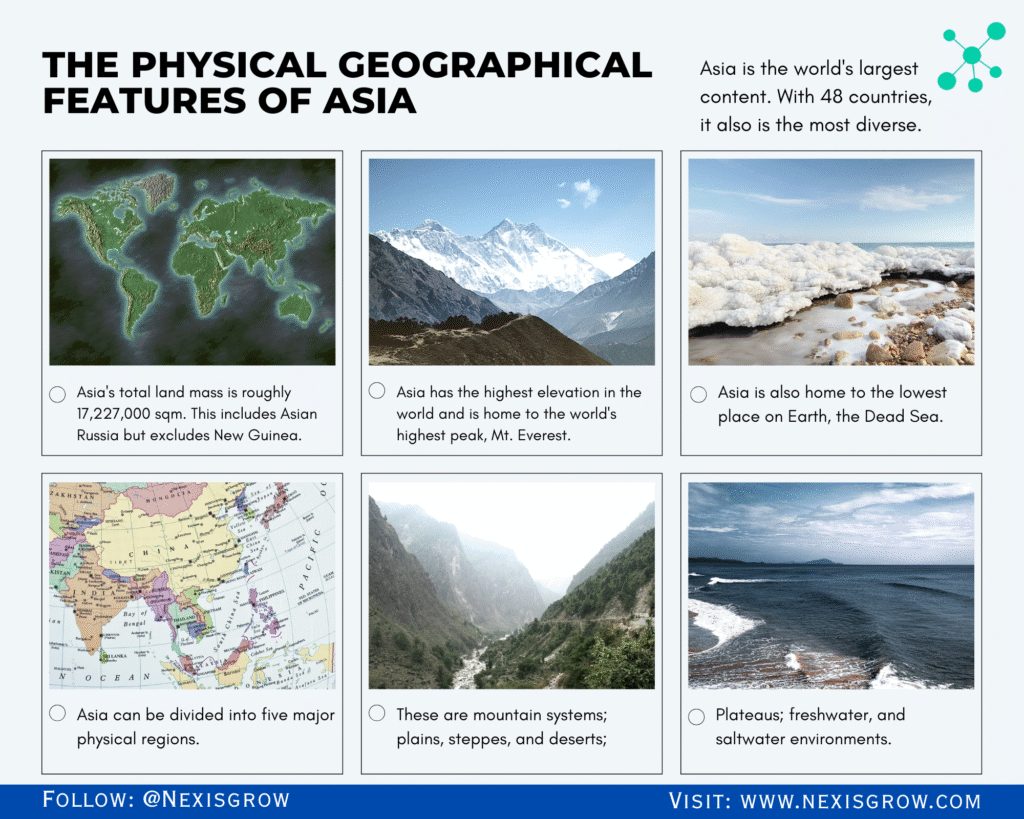Hindi/English

Mountains, Plateaus, and Plains of India – A Complete Guide for Exam Aspirants
India’s diverse physical geography plays a crucial role in shaping its climate, agriculture, biodiversity, and even culture. For government exam aspirants, particularly those preparing for UPSC, SSC, State PSCs, NDA, and CDS, understanding the major physiographic divisions of India—Mountains, Plateaus, and Plains—is foundational.
The Mountain Ranges of India
The Himalayan Mountain System
The Himalayas stretch across northern India for about 2,500 km. They are young fold mountains that influence climate and act as a natural barrier.
Division (West to East):
- Western Himalayas – Jammu & Kashmir, Himachal Pradesh
- Central Himalayas – Uttarakhand and Nepal border
- Eastern Himalayas – Sikkim, Arunachal Pradesh
Classification by Altitude:
- Greater Himalayas (Himadri)
- Lesser Himalayas (Himachal)
- Shiwaliks
Other Ranges:
- Trans-Himalayas – Karakoram, Zaskar, Ladakh
- Eastern Hills – Patkai, Naga, Mizo, and Manipur Hills
The Peninsular Plateau of India
The Peninsular Plateau is the oldest landmass of India and a rich source of minerals. It consists of several important sub-regions.
Major Subdivisions:
- Deccan Plateau – Maharashtra, Telangana, Karnataka, Tamil Nadu
- Central Highlands – Malwa Plateau, Bundelkhand, Baghelkhand
- Chotanagpur Plateau – Jharkhand, northern Odisha, and Chhattisgarh
- Meghalaya Plateau – Garo, Khasi, and Jaintia Hills
The Great Plains of India
The Indo-Gangetic Plains are fertile, densely populated, and agriculturally productive. Formed by Himalayan rivers, they are divided into regions:
- Punjab Plains – Formed by Indus and tributaries
- Ganga Plains – Uttar Pradesh, Bihar, West Bengal
- Brahmaputra Plains – Assam region, prone to floods
Importance of These Physiographic Divisions
| Feature | Importance |
|---|---|
| Mountains | Natural barrier, source of rivers, climate influence |
| Plateaus | Rich in minerals, hydropower potential |
| Plains | Agricultural backbone, dense population |
Quick Revision Points
- Himalayas = Young Fold Mountains
- Deccan Plateau = Oldest region, mineral-rich
- Indo-Gangetic Plains = Alluvial soil and farming
Mains Perspective (GS1 – Geography)
In UPSC Mains, typical questions might include:
- “Compare and contrast the physical features of Northern Mountains and Peninsular Plateau.”
- “Discuss the role of Indo-Gangetic Plains in shaping Indian economy and society.”
Always support answers with diagrams and recent examples such as Brahmaputra floods or mineral mining in Chotanagpur.
Practice MCQs
| Question | Options | Answer |
|---|---|---|
| The Chotanagpur Plateau is famous for: | a) Alluvial soil b) Cotton cultivation c) Mineral deposits d) Tea plantations |
c) Mineral deposits |
| Which mountain range lies between Narmada and Tapi? | a) Satpura b) Aravalli c) Vindhya d) Western Ghats |
a) Satpura |
Conclusion
Understanding the physiography of India isn’t just about memorization—it’s about connecting landforms to real-life issues like agriculture, resources, and climate. Mastering this helps in both Prelims and Mains and boosts your confidence for map-based and analytical questions.
